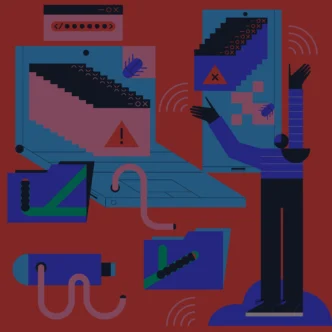Enhancing endpoint security is crucial for small and medium-sized businesses (SMBs) aiming to protect their digital assets without incurring prohibitive costs. By implementing strategic measures and leveraging cost-effective solutions, SMBs can significantly bolster their cybersecurity posture.
1. Assess Current Security Posture
Begin by conducting a comprehensive risk assessment to identify vulnerabilities within your network. This evaluation should encompass all devices connected to your network, including computers, mobile devices, and IoT gadgets. Understanding your current security landscape is essential for prioritizing areas that require immediate attention.
2. Implement a Least Privilege Model
Adopt the principle of least privilege (PoLP), ensuring that employees have access only to the information necessary for their roles. This approach minimizes potential damage from compromised accounts and reduces the risk of insider threats. Implementing role-based access controls can effectively enforce this model.
3. Invest in Cost-Effective Endpoint Protection Solutions
Selecting the right endpoint protection platform (EPP) is vital for safeguarding your network. Consider solutions that offer a balance between robust security features and affordability:
- ESET PROTECT: Tailored for SMBs, ESET PROTECT offers comprehensive protection across multiple platforms, including Windows, macOS, and Linux. Features like a software firewall and Host-based Intrusion Prevention System (HIPS) are included. However, note that remote administration capabilities for Linux endpoints are limited.
- Bitdefender GravityZone Business Security Enterprise: This solution provides advanced threat protection with features like sandbox analysis and customizable dashboards. While it offers robust security, some features may have a steep learning curve, and it may be on the higher end of the budget spectrum.
- F-Secure Elements: Known for its excellent detection performance and device management features, F-Secure Elements offers good customization and policy management. However, reporting features are somewhat limited, and certain advanced features may come at an additional cost.
- SentinelOne Singularity Platform: Known for its AI-driven threat detection and automated response capabilities, SentinelOne provides scalable solutions suitable for SMBs.
- CrowdStrike Falcon: This platform offers advanced threat intelligence and real-time protection, making it a strong contender for businesses seeking comprehensive security.
- Microsoft Defender for Endpoint: Integrated seamlessly with Windows systems, it provides robust protection and is a cost-effective solution for businesses already utilizing Microsoft products.
4. Regular Software Updates and Patch Management
Ensure that all software, including operating systems and applications, are updated regularly. Unpatched software can serve as an entry point for cyber attackers. Implementing automated patch management solutions can streamline this process and reduce the likelihood of human error.
5. Employee Training and Awareness
Human error remains a leading cause of security breaches. Regular training sessions should educate employees on identifying phishing attempts, creating strong passwords, and adhering to security protocols. A well-informed workforce serves as the first line of defense against cyber threats.
6. Utilize Firewalls and Intrusion Detection Systems
Deploy firewalls to monitor and control incoming and outgoing network traffic based on predetermined security rules. Additionally, Intrusion Detection and Prevention Systems (IDPS) can identify and thwart potential threats before they infiltrate your network. These tools are essential for maintaining a secure network environment.
7. Develop an Incident Response Plan
Prepare for potential security incidents by establishing a clear incident response plan. This plan should outline the steps to be taken in the event of a breach, assign responsibilities to team members, and include communication strategies to mitigate damage effectively.
8. Leverage Cloud-Based Security Solutions
Cloud-based security services offer scalability and can be more cost-effective than traditional on-premises solutions. They provide real-time updates and can be managed remotely, making them ideal for SMBs with limited IT resources.
9. Implement Multi-Factor Authentication (MFA)
Enhance account security by requiring multiple forms of verification for access. MFA significantly reduces the risk of unauthorized access due to compromised credentials.
10. Monitor and Review Security Measures Regularly
Continuous monitoring of your security infrastructure is essential. Regular reviews and audits can help identify weaknesses and areas for improvement, ensuring that your security measures evolve alongside emerging threats.
By adopting these strategies, SMBs can establish a robust endpoint security framework that aligns with budgetary constraints while effectively protecting against cyber threats.














